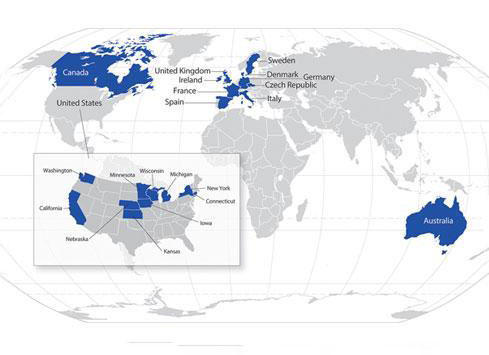Background
Each year, more than half a million people worldwide are diagnosed with non-Hodgkin lymphoma (NHL), a diverse group of cancers of the immune system. Although past research suggested different subtypes of NHL may have different causes, those individual studies lacked sufficient statistical power to show this definitively. The International Lymphoma Epidemiology Consortium (InterLymph) was launched to pool data across studies in order to overcome this problem.
Overview
The goal of InterLymph is to enhance collaboration among epidemiologists studying lymphoma, provide a forum for the exchange of research ideas, and create a framework for collaborating on analyses that pool data from multiple studies. Within the consortium, DCEG investigators have led pooled analyses to 1) investigate whether the risk of NHL associated with cigarette smoking and personal hair dye use is modified by genetic variation in N-acetyltransferase 1 (NAT1) and 2 (NAT2), which encode enzymes that metabolize aromatic and heterocyclic amines, and 2) provide the first comprehensive assessments of risk factors for several rare lymphoma subtypes.
For more information, refer to the InterLymph website.
Results from the InterLymph Consortium
The consortium quantified risk associated with medical history, lifestyle factors, family history of blood or lymph-borne cancers, and occupation for 11 different NHL subtypes, including less common subtypes. By pooling data from their studies, they produced 13 papers published as a monograph in the Journal of the National Cancer Institute.
Reference
Morton LM, Slager SL, Cerhan JR, et al. Etiologic heterogeneity among non-Hodgkin lymphoma subtypes: The InterLymph Non-Hodgkin Lymphoma Subtypes Project. J Natl Cancer Inst Monogr. 2014.
